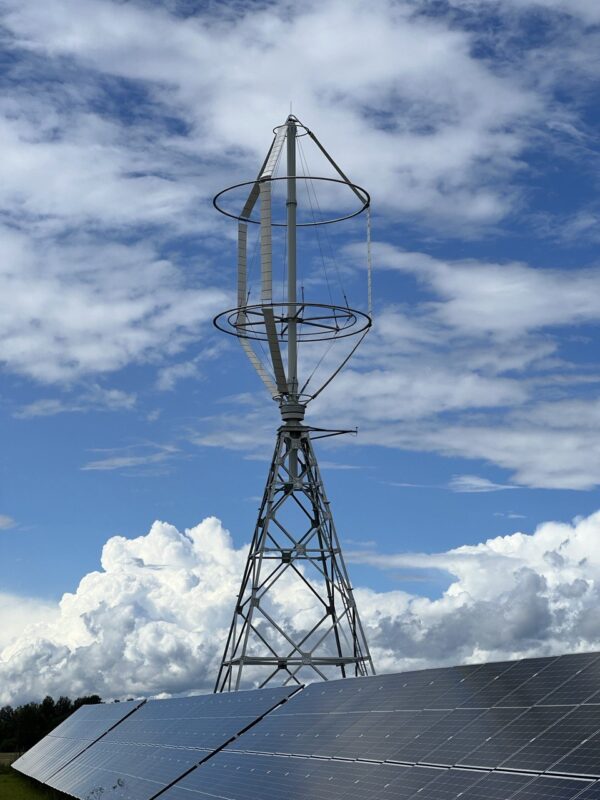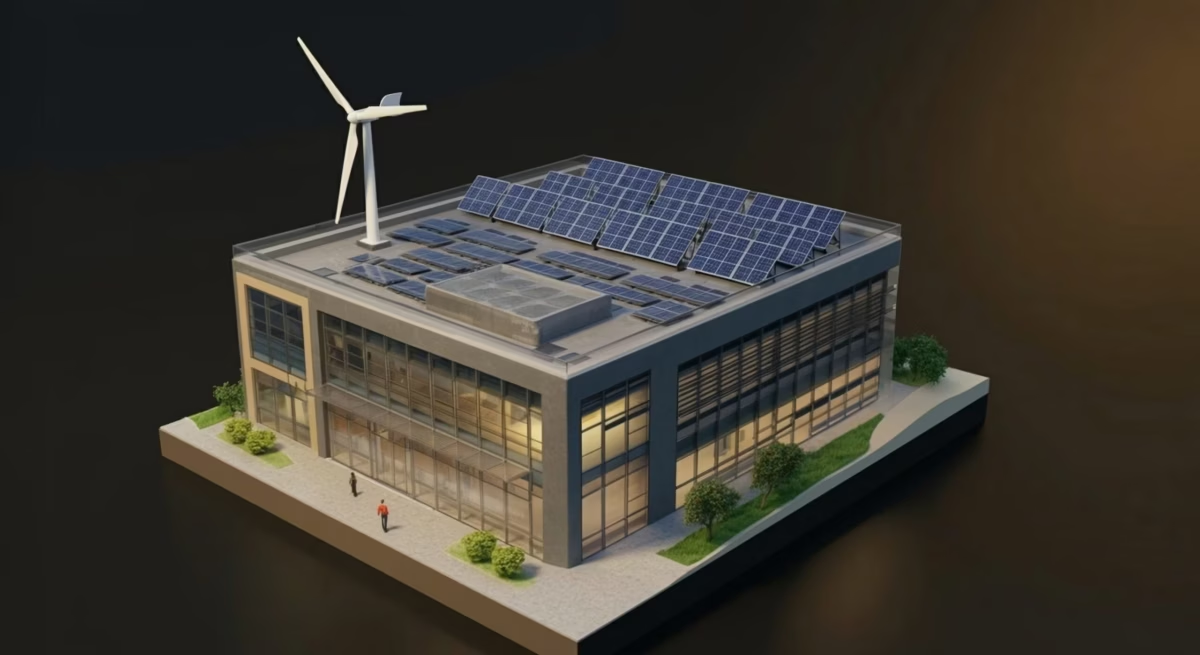Introduction
In the context of increasing global energy and environmental challenges, the significance of renewable energy sources is becoming particularly prominent. Wind energy, as one of the most promising and environmentally friendly technologies, plays a vital role. In the sustainable development of the global energy infrastructure. Small wind energy, in particular, opens up new horizons for solving energy issues in developing countries. By making energy accessible in remote and hard-to-reach areas.
Developing countries face unique challenges that can be addressed with small wind energy technologies. These technologies both help reduce dependence on imported fossil fuels and significantly improve the environment by lowering carbon emissions. In this regard, it is essential to highlight and analyze both the opportunities and challenges. They are associated with the small wind energy implementation in such regions. This analysis helps gain a deeper insight into the capabilities and boundaries of the technology.
This article aims to explore the current state, prospects and hurdles faced by small wind energy in developing countries, in order to propose ways to improve and develop these technologies in the light of global and regional aspirations in the field of renewable energy.
Current state of small wind energy in developing countries
Small wind energy in developing countries exhibits outstanding potential. This potential is due to its ability to supply power to remote and hard-to-reach areas. Despite economic and geographic disparities, the successful projects implemented in the regions of Africa, South Asia, and Latin America. highlight the universality and adaptability of this technology. For example, in Kenya, small wind turbines provide electricity to a number of small villages. enabling access basic communal and educational services. In India, a small wind system deployment program supports agricultural and production needs, improving the lives of thousands of residents.
Statistics shows that the total installed capacity of small wind turbines in developing countries is increasing every year. According to the latest reports, at present, small wind energy now accounts for several hundred thousand installations, highlighting the growth and advancement of its application.
However, the distribution and efficiency of wind systems vary from country to country due to differences in political support, infrastructure capacity, and availability of funding. These factors affect the overall picture of wind energy utilization and point to the need for further research and adaptation to local conditions.
Opportunities of small wind energy

Small wind energy provides significant opportunities for developing countries, especially in the context of sustainable development and economic growth. These opportunities can be realized through several key aspects:
Access to energy in remote areas: Small wind turbines are ideal for providing power to remote and isolated communities where laying traditional infrastructure is often not cost-effective. For example, in many regions of Africa, small wind turbines allow schools, health centers, and local businesses to operate off-grid.
Reducing dependence on fossil fuels: The introduction of small wind power decreases dependence on fossil fuels, ultimately bolstering energy security and lowering carbon footprint of the countries. This holds particular significance for nations grappling with soaring oil and gas costs.
Economic development: The development of small wind energy helps create jobs and develop local industries. The training and employment of community members in the wind turbine installation and maintenance, both bolsters the economy and contributes to the accumulation of domestic technical expertise.
Environmental sustainability: Wind power is one of the cleanest sources of energy. The advancement of this industry in developing countries contributes to the fulfillment of international obligations to reduce greenhouse gas emissions and improve the environmental situation at the local level.
Small wind power is poised to play a pivotal role in sustainable development strategies, viable solution to satisfy energy demands without causing substantial harm to the environment.
Challenges and obstacles
The introduction of small wind energy in developing countries is complicated by numerous challenges. This necessitates an integrated approach and innovative solutions:
Financial and investment barriers: Despite the decreasing cost of wind energy technologies, the upfront investment remains significant. To facilitate broader adoption and scaling of this technology, it is imperative for governments and regulators to step up. They must provide increased financial support.
Policy and regulatory support: Successful incorporation of wind energy into the energy system hinges on strong, unwavering government support. The presence of supportive laws, financial incentives, and regulations is decisive for the success of the projects.
Technical issues and maintenance: Despite the difficulties in maintenance and spare parts availability, these challenges also stimulate innovation and the development of local skills. The development in local technical skills and logistics opens up new avenues for enhancing the efficiency and reliability of the systems.
Sociocultural barriers: Cultural and social biases may hinder the adoption of new technologies. Nevertheless, targeted educational programs and information campaigns can significantly increase public awareness and support for the deployment of renewable energy sources.
The key to the successful implementation of small wind energy projects lies in understanding and proactively addressing these challenges, which ultimately contributes to wider adoption and diffusion of this technology.
Future of small wind energy in developing countries
Small wind power in developing countries has a bright future ahead, thanks to advancements in technology. There is an increasing global focus on combating climate change and promoting sustainable development. It is critical to prioritize the following key areas for further growth and advancement:
Innovation and cost reduction: Continued research and development in wind energy technologies are driving down installation costs. and improve their efficiency, potentially making small wind power more accessible and appealing to emerging economies.
Improved political and regulatory support: Enacting policies that provide incentives, making licensing processes more straightforward, and offering fiscal perks can significantly expedite the adoption of wind technologies. Support in the field of training and development of qualifications of local specialists is also important.
International cooperation: Participation in international energy and environmental programs can provide access cutting-edge technologies and secure additional financial support. Showcases of successful international cooperation already show how this can help countries develop their own renewable resources.
Focus on education and public awareness: It is essential to invest more in educational programs that promote the advantages of renewable energy. This is necessary to garner public support and acceptance for emerging technologies. Development of integrated energy solutions: Small wind energy can be effectively integrated with other renewable energy sources such as solar energy. This creates robust and sustainable energy systems for remote areas.
Future small wind energy strategies should be based on an integrated approach encompassing both technological advancements and socio-economic factors. The implementation of these strategies both contributes to improving energy security. It also plays a key role in the achievement of the global goals of sustainable development.
Conclusion
The advancement of small wind power in developing countries represents a modern approach to energy. Offering sustainable solutions for long-term progress.
This area lies at the crossroads of environmental stewardship, cutting-edge technology, and community welfare. Paving the way for greater energy self-sufficiency.
FREEN, as the largest manufacturer of small wind turbines, possesses both the production capacity and technical expertise needed. To meet the growing demand for these installations around the world.
This is clearly evidenced by our flagship product, FREEN-20, with its remarkable energy conversion efficiency and capability. To operate effectively in low wind conditions.
The product’s technical features, which ensure low noise emissions and ease of installation, make it stand out in the market. And suitable for a wide variety of needs and operating conditions.
We take pride in offering eco-friendly and economically viable solutions that bolster energy security. And enhance the quality of life in developing nations.
Acknowledging the need for an integrated approach to overcome barriers to energy independence, FREEN strives to forge alliances and collaborations. In order to jointly harness the enormous potential of small wind energy.
Therefore, we stand prepared to o contribute to advancements in this field, promoting the principles of sustainable development. And innovative thinking at the international level.






